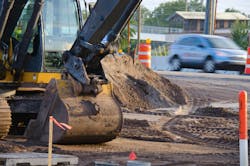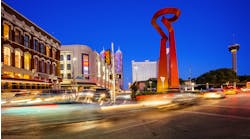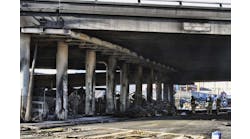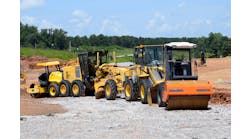On Tuesday, the Seattle City Council approved a new 20-year transportation plan for transit, street, sidewalk, and bridge projects across Seattle that will serve as the framework for the planned $1.35 billion transportation levy renewal vote this fall.
Mayor Bruce Harrell and council leadership are emphasizing the plan’s focus on issues like potholes, sidewalks, and costly infrastructure repairs over the ambitious new initiatives and projects it might eventually spawn.
“It’s time for us to prioritize the bold basics of local government. From filling potholes to expanding access to public transit, this 20-year vision for the future of Seattle’s roads does just that,” District 3 Councilmember Joy Hollingsworth, vice chair of the council’s Transportation Committee, said in a statement. “Local government can’t solve every problem on its own, but when we put our mind to it, we can build world-class transportation infrastructure.”
Under the transportation resolution passed Tuesday, the city will adopt the updated plan that shapes guidelines for multiple modes of movement and travel including transit, vehicles, bicycles, freight, pedestrians, Vision Zero, and more, “and will likely inform the investments in the upcoming Seattle Transportation Levy.”
Under the new transportation plan and with the power of the new levy, the 23rd Ave corridor is an example of the type of transportation investments the city will focus on in coming years with reconstruction and paving, a corridor safety analysis, additional transit investment, and crossing improvements, sidewalk repair, and neighborhood greenway upgrades.
Salt Lake City is also in the process of adopting a new citywide transportation plan. On Tuesday, officials briefed the city council on the goals, including an aim to heal the east-west divide.
The city last created a full transportation plan in 1996. Healing the east-west divide is one of eight sections in the proposed plan, and it shows challenges of how I-15 and train tracks affect the lives of west-siders.
In the document, transportation officials outlined four strategies for mending the city. First, they want to develop a list of projects. They then would prioritize making train and freeway crossings safer and more predictable by adding better signs and redesigning interchanges.
They also want to build more community spaces and beautify passageways underneath the interstate. Finally, they hope to build more well-connected neighborhoods by establishing mobility hubs with additional amenities and creating more public spaces above I-15, like the Seattle Convention Center that spans Interstate 5.
--------------------------------------------------
Source: SLC Tribune, Capitol Hill Seattle



